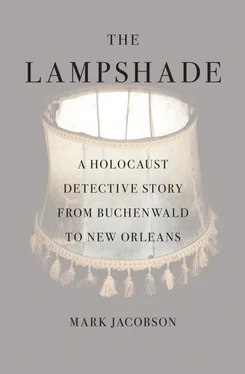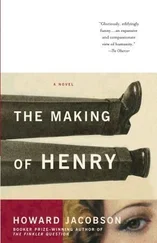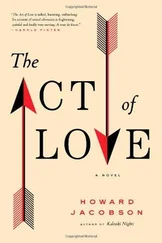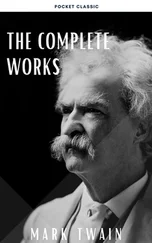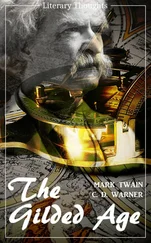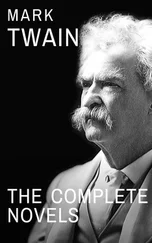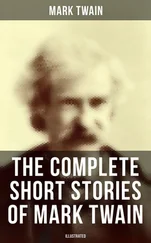I wandered through the mazelike rooms of the museum. The place felt like a cluttered basement, a scary place down creaky steps filled with piles of regrettable things better kept from the light of day. Devoid of the professional curatorial hand, the exhibits had an uneven, homemade quality. A series of famous photos from the camps and the Warsaw Ghetto, cut from magazines and haphazardly taped to poster board, sat beside remarkable items such as a jacket made from Torah parchment, supposedly fitted by Jewish tailors on the orders of a Nazi officer. A number of grotto-like rooms contained marble tablets commemorating the names and places of shuls and congregations destroyed by the Nazis. There were hundreds of these irregularly sized plaques with names of vanished, forgotten communities like Abgustov, Adalin, Adan, Bacav, Backa-Palanka, Bacsalmas, Cakovec, Chamatiz, Chanuzev. It went on and on, a succession that numbed the mind with loss and sorrow. Here, in the claustrophobic chambers, with the unswept floors, broken pipes, and mildew, you returned to a sort of Jewishness that must have haunted Kafka, with all the poverty, superstition, fear, and unwelcoming strangeness typically edited out of museums set in buildings designed by I. M. Pei.
Finally I came around to the soap and the ashes. Bearing the inscription “From Jews whose dying words proclaimed their faith in the Almighty,” the soap, surrounded by a dozen or so striped porcelain urns affixed with a red star, was piled up inside a long-unwashed glass cabinet about a foot high. Dark gray, the stuff looked petrified. It could have been chunks of anything. I took a picture and went outside, where Aharon sat talking with a few old men.
“The soap,” I said. “Did they ever have that tested?”
Aharon squinted. “Tested? What for?” he asked.
“To see if it is real.”
“Of course it is real. The rebbe says it is real.”
“The rebbe is a scientist? You know, they say soap made from Jews is a myth. That there’s no such thing.”
“Who says that?”
“At Yad Vashem they say that. I was just there.”
“Yad Vashem! Don’t talk to me about Yad Vashem!” He got up and summoned me to follow him. He led me out the gate and into the vestibule of the yeshiva around the corner.
“I can’t talk in front of those people,” Aharon said hurriedly. He had some things he wanted to tell me but first needed to know whom he was dealing with. Examining my card, he placed his fingertips against his forehead, marshaling his thoughts.
“You are Jewish, so I will tell you. You cannot listen to what Yad Vashem says. It is full of Germans.”
I wasn’t aware of the German influence at Yad Vashem.
“Who do you think gives out all the big grants for Holocaust research? Germans. The Germans decide what will come out and what won’t. Not everything. But a lot. A lot. That’s why they say what they say about the soap and other things. I have done a lot of research on this. I could send it to you. You could write an article. An exposé.”
Aharon scribbled his email address on the brochure for the Chamber of the Holocaust, placed it in my hand, and ran back inside. Without him, he said, no one was available to watch the museum.
Almost directly across the narrow Mount Zion Street, a busload of English tourists was queued up in front of the Tomb of David. A staple on sightseeing tours, the tomb, formerly used as both a Byzantine church and a French monastery, is an old building even by Jerusalem standards. It was in the twelfth century CE, during the Crusades, that the place was first declared to be David’s tomb, in other words, about two thousand years after the erstwhile shepherd boy supposedly killed Goliath. However, there is no proof as to the veracity of this claim. No scientific documentation has been attempted on the contents of the coffin, nor is there any definitive evidence that any body, let alone David’s, was ever buried here. But that does not stop the crowds from filing into the building, pausing to deposit a few shekels into the venerable tzedakah donation box, and snapping copious photos of the blue-velvet-draped sarcophagus.
This was the syndrome throughout the Holy City, where the dialectic between science and belief, truth and faith, went blooey. The sacred, supposedly absolute, eternal, unchanging I Am was instead a movable, protean thing. It was in the eye of the beholder, expanding like air to fill the space. What, for instance, are the chances that the so-called Stone of the Anointing inside the Church of the Holy Sepulchre is really the same rock where Jesus’ body was prepared for burial? The church itself was severely damaged in a fire in 614 and again in 966; the present stone only appeared in its current spot in 1808. Yet people still come, they still lean over the rock, shed their tears upon it. How much of that belief has to be directed before a regular rock, a dumb piece of geology, is transformed into a holy slab, floating through outer space like the monolith that ennobled the tribe of apes in 2001: A Space Odyssey ?
I looked at the lampshade, sitting in its box on the desk in my darkened Jerusalem hotel room. Since the thing had arrived at my door in Brooklyn, I’d been attempting to find out who and what it was. And now that I was in a place where a rock can be said to become divine simply because enough people wish it to be so, I could feel the questions I’d been asking about the lampshade turned back on myself. Was this part of the Jerusalem syndrome, to imagine that a human skin lampshade was capable of administering the third degree to its supposed keeper? Who knew, but certain questions of identity suddenly felt unusually pressing.
Farid Abu Gosh, the Arab Israeli, said there was no getting around it: when there’s a wall, inevitably, no matter the color of your identity card, you will be asked which side you are on. Years ago the late Jack Newfield, a treasured friend and mentor who in his reportorial calling lived by the Old Testament credo “An eye and an ear for an eye,” said, “Don’t back down, speak your mind, but when the topic of Israel comes up, play dumb, because whatever you say, it just won’t be worth it.”
This remains good advice in Greenwich Village. Except here I was, in Eretz Yisrael, and a surprising thing had happened. I’d gone to the West Bank, found conditions there to be more miserable than I had imagined—more miserable, in fact, than many of my sweet liberal, Palestinian-supporting buddies back in New York had presented them to be—and I returned to Jerusalem with a newfound sympathy for the Israelis.
This didn’t mean I wanted to move into a settlement financed by some Bokharan oligarch, vote for Benjamin Netanyahu, or become an acolyte of Rabbi Ovadia Yosef, spiritual leader of the ultra-Orthodox Shas Party, who said Hurricane Katrina was “God’s retribution” for a lack of Torah study in the area and because black people “have no God.” But I did attend a pleasant Shabbos lunch at the home of Robby Berman in the nice proto-yuppie neighborhood off Emek Refaim Street.
I had met Berman in New York at a lecture he was giving on behalf of the Halachic Organ Donor Society (HODS). A Harvard Kennedy School graduate who prefers to ride a bike and doesn’t mind sleeping on floors, Berman, HODS founder and president, is engaged in a campaign to encourage religious Jews to donate vital organs despite the widespread teaching that Jewish law forbids the practice. He also seeks to alter religious thinking on the moment of death. Many Orthodox rabbis maintain that the body can only be said to be dead when the heart stops beating. Berman counters by saying this is often too late to save other organs, arguing instead that “brain stem death”—the moment when the body stops functioning of its own accord—should be accepted as the end of life. Another issue that came up all the time, he said, was who should get these donated organs. “People say they’ll donate, but it has to go to a Jew.” These were thorny problems, Berman said, but what it came down to was “when is a Jew dead, and who should control his body when that occurs.”
Читать дальше
